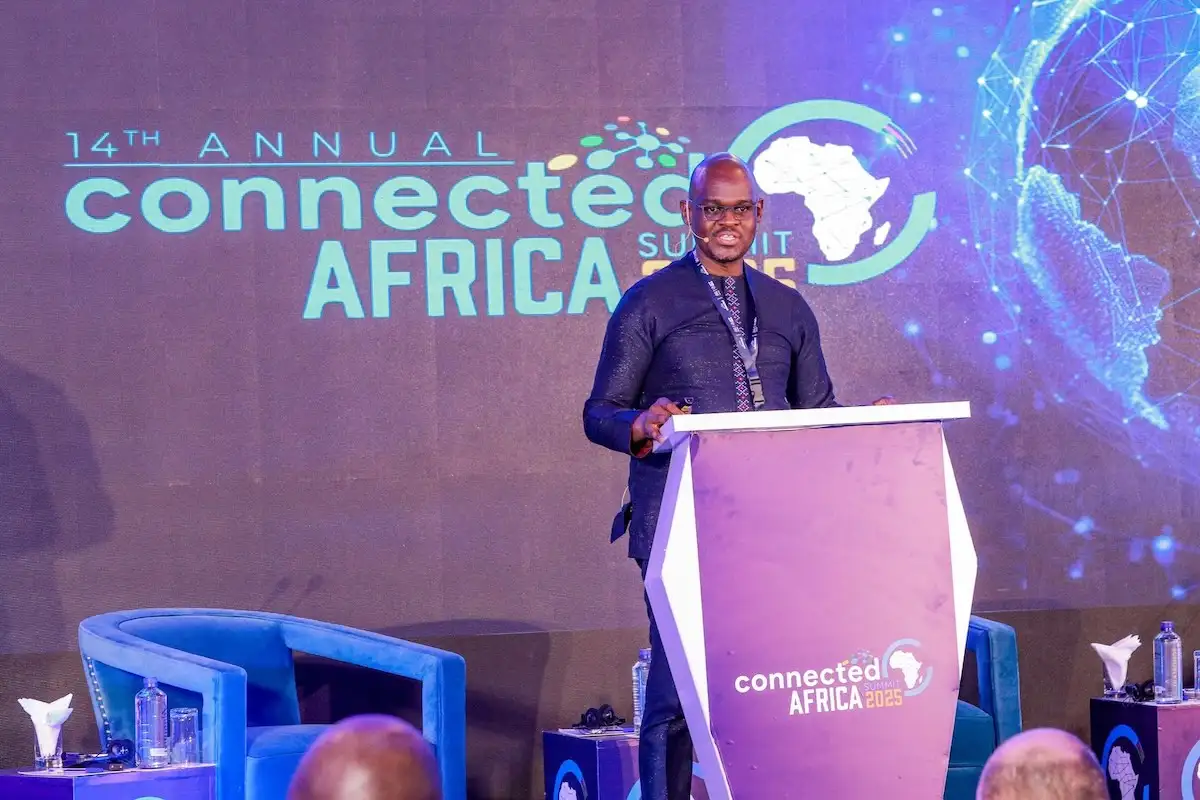At the Connected Africa Summit 2025, Safaricom’s Director for Enterprise Solutions, Wholesale & Carrier, Bernard Muteti, took the stage and called for a shift in how we build, manage and shared fibre optic infrastructure in Africa. He shared a roadmap that can help reduce the cost of deploying broadband and expand digital access across the continent.
“Fibre is the backbone of Africa’s digital economy,” he said. “But the high cost of deploying it continues to limit its reach and impact.”
Fibre optic networks, while essential for high-speed internet and reliable connectivity, remain underutilized across large parts of sub-Saharan Africa. According to the World Bank, less than 30% of households in Africa have internet access. On top of this, broadband costs tend to account for up to 20% of monthly income in low-income areas. This is higher than the UN Broadband Commission’s target of less than 2%.
One of the key reasons is infrastructure duplication. Many telecom operators independently invest in fibre rollouts. This happens even along the same corridors and it drives up capital expenditure without necessarily expanding coverage to underserved regions.
Shared Infrastructure
Muteti emphasized the need for fibre data sharing models where infrastructure is treated as a utility and made accessible to multiple operators. He pointed to Kenya’s NOFBI (National Optic Fibre Backbone Infrastructure) and Tanzania’s NICTBB (National ICT Broadband Backbone) as successful examples of the deployment of shared fibre. Both initiatives are state-led and publicly funded and also allow commercial operators to lease capacity at reduced rates. This helps reduce the barriers to entry and accelerates last-mile connections.
“Open access networks and shared infrastructure are not just good policy, they’re good economics,” Muteti said.
Analysts note that countries that adopt infrastructure sharing typically see faster broadband growth and better price competition. South Africa’s open-access model, pioneered by companies like Dark Fibre Africa (DFA), has helped bring down wholesale bandwidth prices and incentivize local ISPs to enter the market.
In addition to shared fibre, Muteti made a case for regional policy alignment. As internet traffic increasingly flows across borders, between cloud data centers, content platforms, and digital services, inconsistent regulatory frameworks present logistical and legal obstacles.
“Cross-border fibre networks require harmonized licensing regimes, streamlined customs clearance, and aligned right-of-way policies,” he said.
The East African Community (EAC) and Smart Africa Alliance have made some progress regarding policy coherence. Even with such progress, there are still some especially when it comes to interconnection fees, spectrum allocation, and infrastructure taxation.
While the speech focused on infrastructure, its subtext was broader: equitable digital access and socio-economic inclusion. Muteti noted that fibre is not just about faster downloads but is rather about enabling e-health platforms, digital identity systems and e-learning services.
“It’s not enough to build fast networks in isolation,” Muteti concluded. “We must build a shared and harmonized backbone that supports innovation, affordability, and accessibility for all.”



